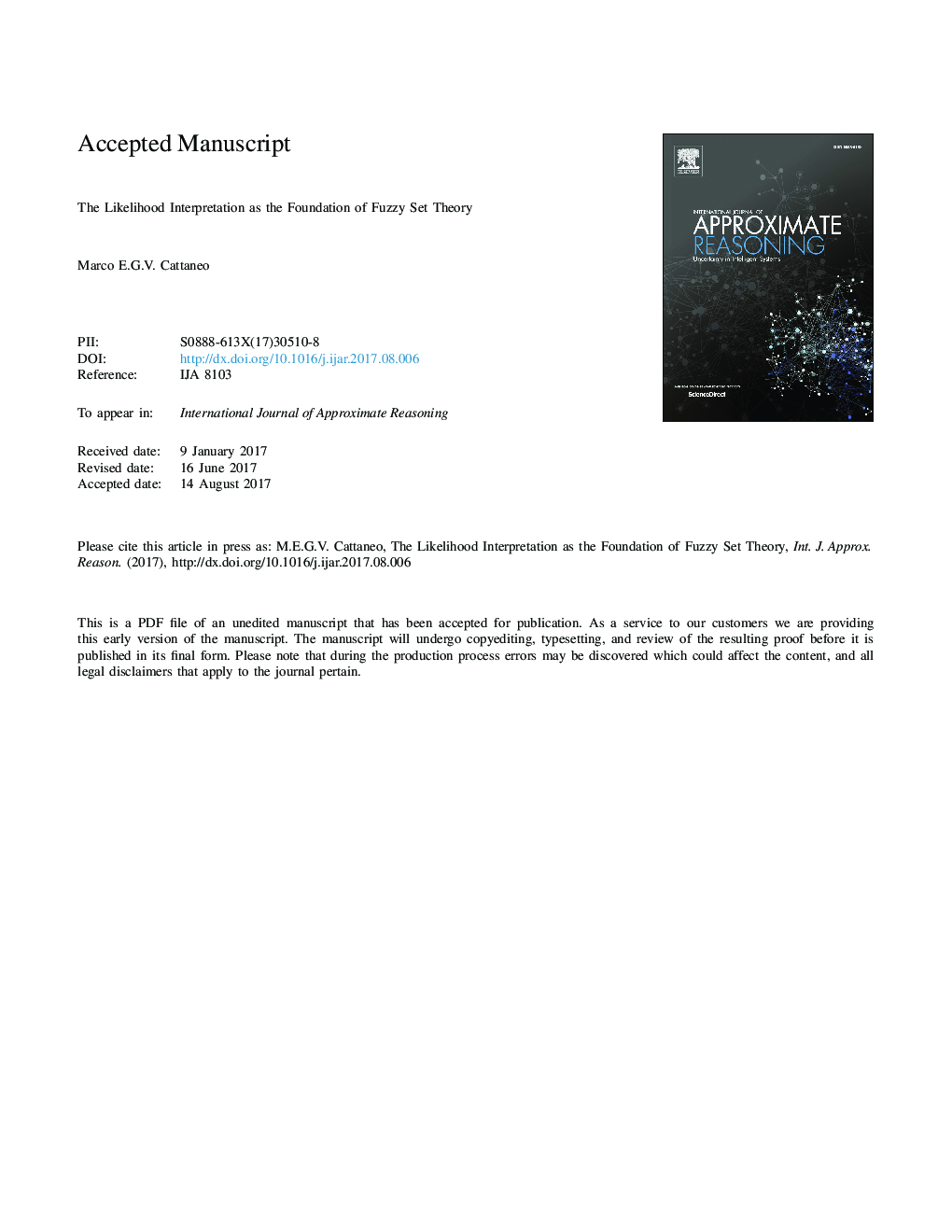| Article ID | Journal | Published Year | Pages | File Type |
|---|---|---|---|---|
| 4945199 | International Journal of Approximate Reasoning | 2017 | 12 Pages |
Abstract
In order to use fuzzy sets in real-world applications, an interpretation for the values of membership functions is needed. The history of fuzzy set theory shows that the interpretation in terms of statistical likelihood is very natural, although the connection between likelihood and probability can be misleading. In this paper, the likelihood interpretation of fuzzy sets is reviewed: it makes fuzzy data and fuzzy inferences perfectly compatible with standard statistical analyses, and sheds some light on the central role played by extension principle and α-cuts in fuzzy set theory. Furthermore, the likelihood interpretation justifies some of the combination rules of fuzzy set theory, including the product and minimum rules for the conjunction of fuzzy sets, as well as the probabilistic-sum and bounded-sum rules for the disjunction of fuzzy sets.
Related Topics
Physical Sciences and Engineering
Computer Science
Artificial Intelligence
Authors
Marco E.G.V. Cattaneo,
